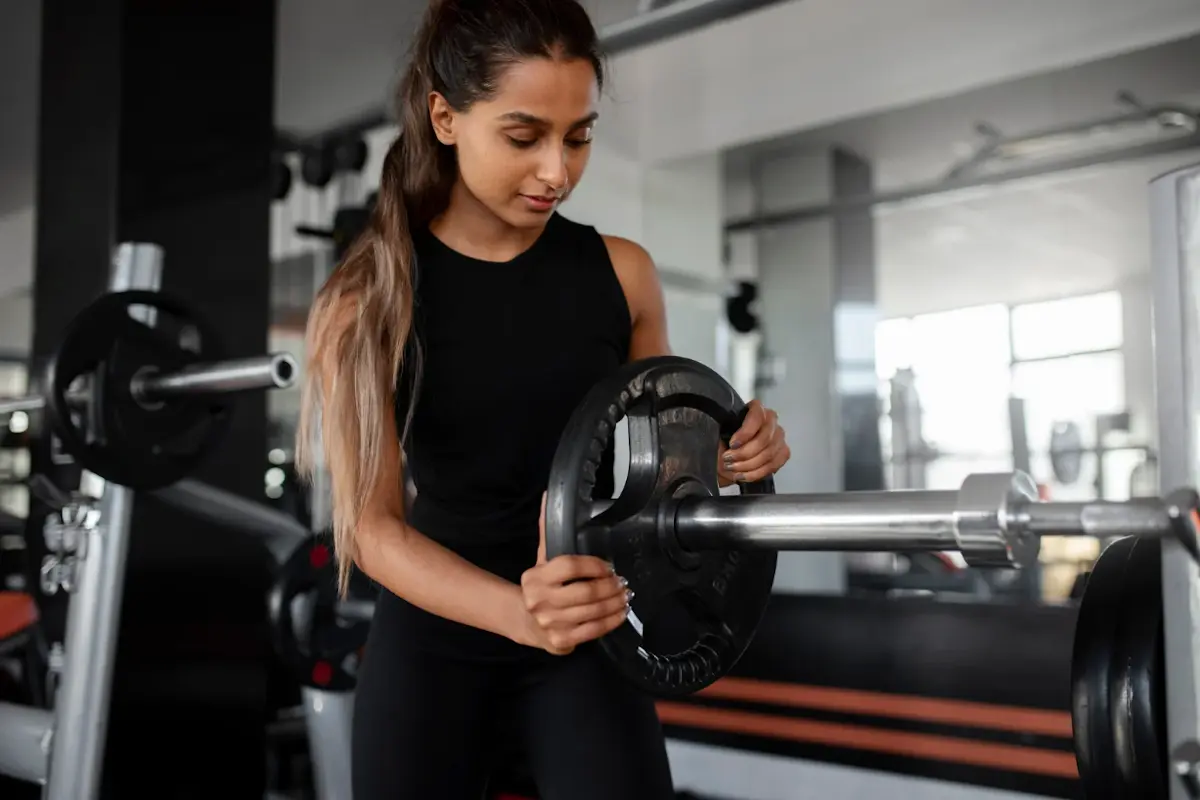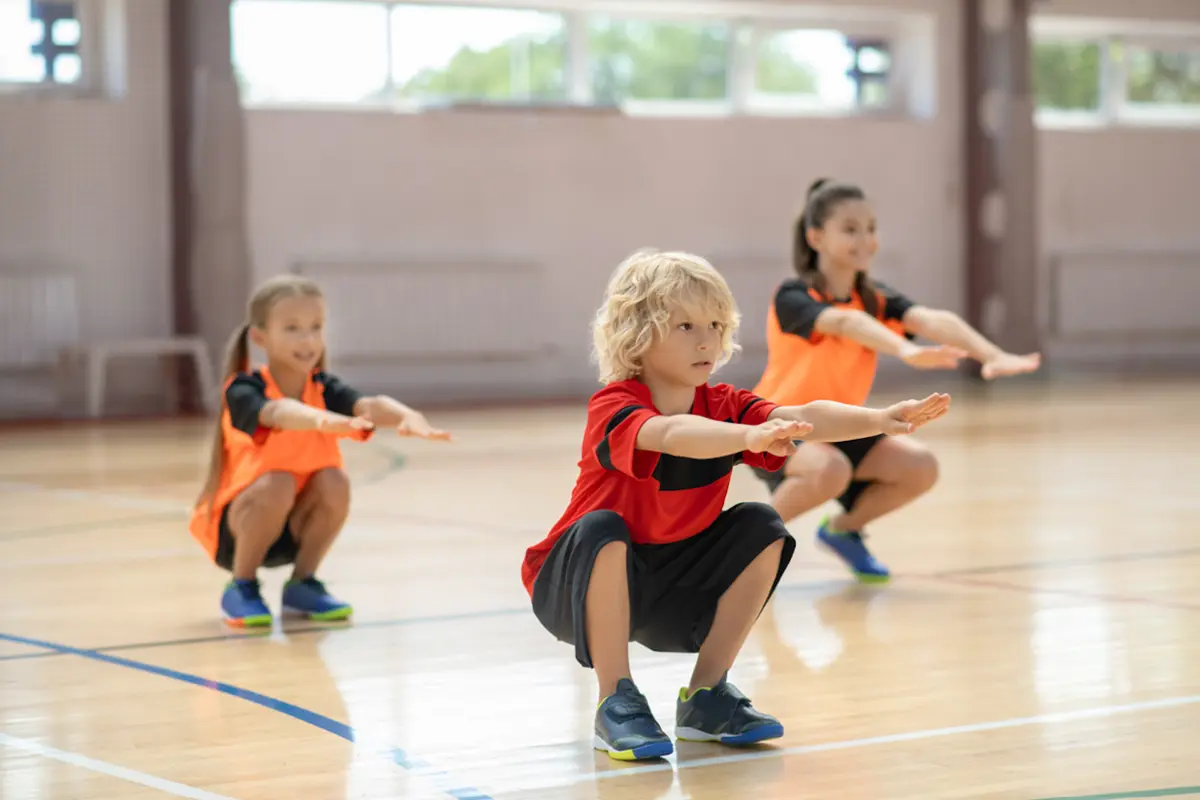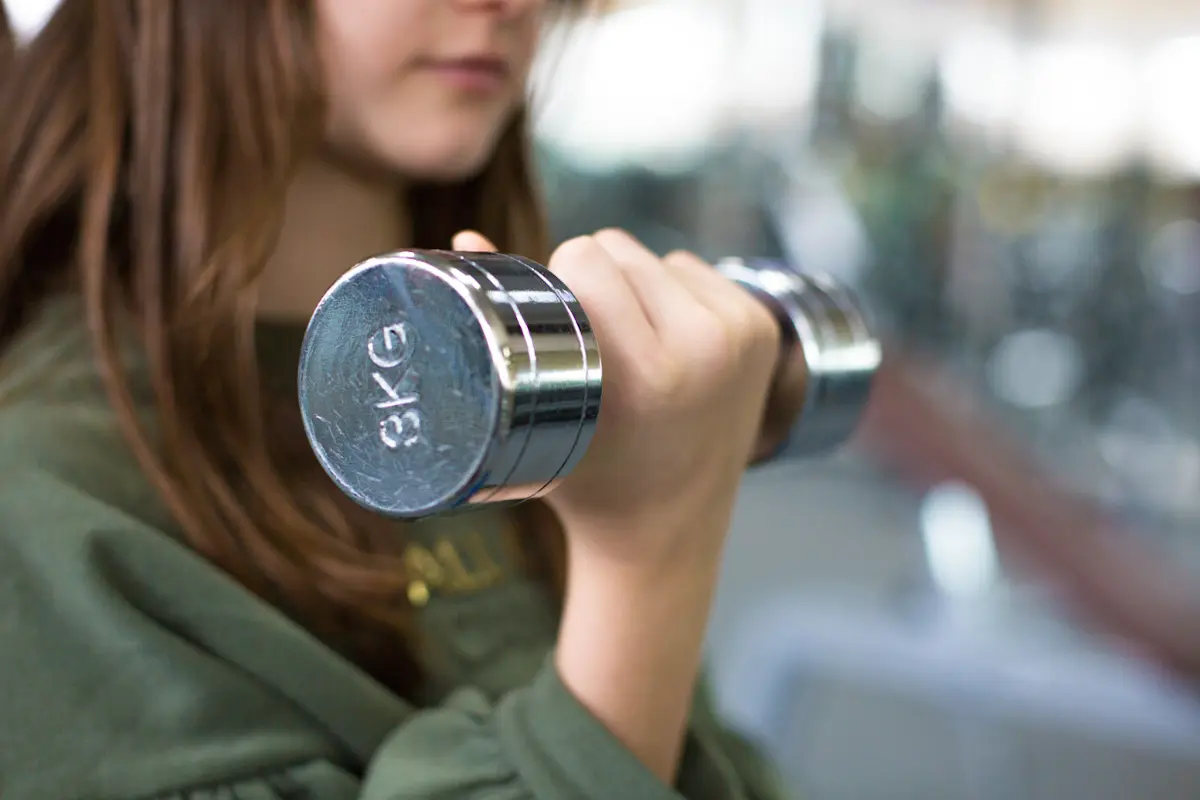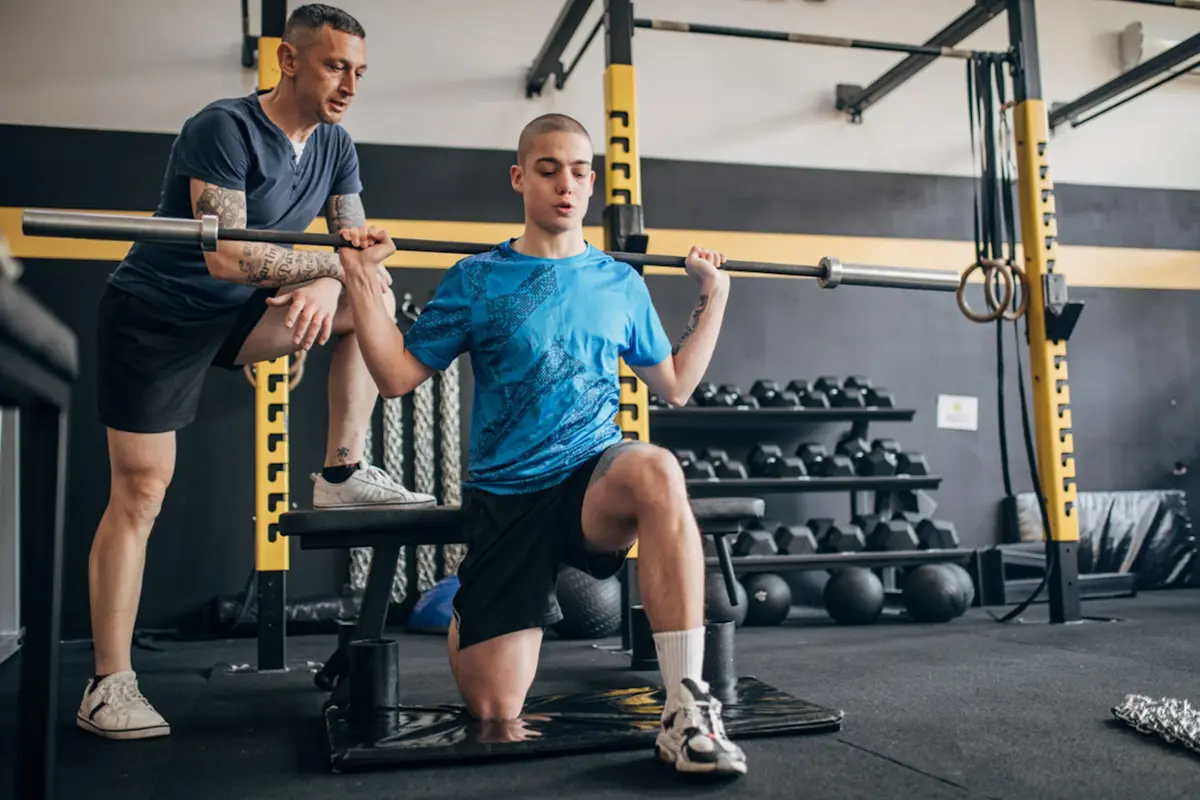Youth Powerlifting: Building Strength and Confidence

What's In This Article
- Key Highlights
- Introduction
- The Physical Benefits of Powerlifting
- Nutritional Considerations for Young Powerlifters
- The Psychological Benefits
- Safety and Proper Training
- Conclusion
- Frequently Asked Questions
- References and Resources
Key Highlights
- Powerlifting offers young athletes significant physical benefits, including improved strength, muscle development, and enhanced performance in other sports.
- The sport develops crucial psychological attributes like discipline, resilience, and a strong work ethic that extend beyond athletic performance.
- Proper technique and age-appropriate training are essential for safety, with coaches playing a critical role in guiding young powerlifters.
- Nutrition is key for young powerlifters, requiring a balanced diet rich in proteins, carbohydrates, and healthy fats to support muscle growth and recovery.
- The powerlifting community provides a supportive environment that fosters teamwork, belonging, and mutual encouragement for young athletes.
- Contrary to common misconceptions, youth powerlifting is safe when supervised correctly and can contribute significantly to a young athlete's physical and character development.
Introduction
Powerlifting, a sport focused on maximizing strength in three key lifts – the squat, bench press, and deadlift – has gained popularity among young athletes. It's a test of pure strength, discipline, and technique, where competitors aim to lift as much weight as possible in each discipline.
Despite its growing appeal, youth powerlifting is often misunderstood. Some believe that powerlifting at a young age can stunt growth or cause undue harm. However, research has consistently shown that strength training, including powerlifting, is safe and highly beneficial for young athletes when supervised correctly.
- A 2023 study by Faigenbaum et al. emphasizes the foundational importance of resistance training for children and adolescents. The study notes that today's youth are weaker than previous generations and suggests that early exposure to strength-building activities is crucial for preparing young people for lifelong physical activity.
Another common concern is that powerlifting is unsuitable or too intense for children and adolescents. The key lies in age-appropriate adjustments.
- The sport includes age divisions and body weight classes that provide appropriate competition levels, including national competitions like the youth nationals, emphasizing drug testing to ensure safe and fair competition.
Training for young lifters is about something other than maxing out weights. Instead, it focuses on learning proper techniques, developing a base level of strength, and gradually progressing safely.
- Faigenbaum et al. (2009), in the 'Journal of Strength and Conditioning Research', demonstrate that under professional supervision, youth resistance training can enhance muscular strength and power, improve motor skill and sports performance, and increase a young athlete's resistance to sports-related injuries.
- Greg Everett, an Olympic weightlifting coach, stresses the importance of establishing a proper foundation for beginning resistance training. He states, "The more important goal for beginning and intermediate training programs is to establish a proper foundation that will allow maximal long-term improvements".
Powerlifting for youth lifters is about laying the groundwork for lifelong fitness, instilling discipline, and fostering a healthy relationship with physical activity. It's not just about the weights lifted but about building a foundation of physical and mental strength that young athletes can carry into other areas of their lives.

The Physical Benefits of Powerlifting
Strength Building and Physical Development
- One of the most tangible benefits of powerlifting for young athletes is the significant improvement in strength and physical development.
- A study published in the Journal of Strength and Conditioning Research detailed how adolescent athletes experienced considerable strength gains after participating in a structured powerlifting program (Myer et al., 2013).
- These gains are not merely about lifting heavier weights; they are indicative of enhanced overall muscular development, which is crucial during the growth years of adolescents.
Enhanced Athletic Performance in Specific Sports
- The strength and power developed through powerlifting have direct applications in various sports, particularly those popular among youth, like soccer and basketball.
- A study by Lesinski et al. (2016), published in the Journal of Sports Science & Medicine, showed that young athletes who participated in strength training, similar to powerlifting, significantly improved their performance in sports compared to their peers who did not engage in strength training.
- The strength-trained group improved in crucial areas such as sprint times, vertical jump height, and skills in sports like soccer and basketball.

Nutritional Considerations for Young Powerlifters
Young powerlifters need a diet rich in proteins, carbohydrates, and healthy fats.
- Proteins are the building blocks of muscle; they are essential for repair and growth after strenuous workouts.
- A study by Phillips and Van Loon (2011) in the 'Journal of Sports Sciences underscores the importance of protein intake in muscle hypertrophy and recovery in athletes. They recommend a balanced approach to protein consumption, spread evenly across meals, to maximize muscle protein synthesis.
- Carbohydrates are the primary energy source, especially important in high-intensity sports like powerlifting.
- Healthy fats are crucial for hormonal balance and joint health and vital for young, growing bodies.
Tips for Healthy Eating Tailored to Young Athletes
- Regular, Balanced Meals: Mix protein, carbohydrates, and fats in each meal. For example, breakfast could include eggs (protein), whole grain toast (carbohydrates), and avocado (healthy fats).
- Pre- and Post-Workout Nutrition: Consuming a carbohydrate-rich snack before training can provide energy. Post-workout, a combination of protein and carbohydrates is ideal for recovery. A simple and effective post-workout meal could be a chicken sandwich or a protein shake with a banana.
- Hydration: Staying hydrated is crucial for performance and recovery. Young athletes should drink water throughout the day, not just during workouts.
- Avoid Processed Foods: While it's okay to enjoy treats occasionally, the focus should be on whole, unprocessed foods. These provide more nutrients and better support an athlete's body than processed, sugary snacks.
- Listen to the Body: Each young athlete is unique. Paying attention to how different foods affect energy levels and performance is crucial. Consult with a sports nutritionist to tailor a diet plan specific to the athlete's needs if necessary.

The Psychological Benefits
Discipline and Work Ethics
- Powerlifting requires discipline and a work ethic that extends beyond the gym.
- Regular training in powerlifting instils a sense of routine and commitment in young athletes, teaching them the value of consistency and hard work.
- This discipline is cultivated through structured training schedules, adherence to technical rules and technique, and the pursuit of personal bests.
- Once developed, it's a discipline that becomes an invaluable asset in all areas of life.
Resilience and Overcoming Challenges
- Powerlifting is as much about mental strength as physical.
- Athletes learn to overcome challenges, whether pushing through a tough training session, overcoming the disappointment of a missed lift, or bouncing back from an injury.
- This process of facing and overcoming obstacles builds resilience, which is invaluable both in and out of sport.
- The American Psychological Association (APA) has highlighted the importance of sports in developing resilience in young people. In their findings, sports, including powerlifting, provide a unique environment where youth can learn to deal with setbacks, adapt to new challenges, and develop a growth mindset (Smith et al., 2013).
Goal Setting in Powerlifting
- Setting and achieving goals is a fundamental part of powerlifting.
- These goals range from hitting a new personal record in the squat to successfully competing in a first powerlifting meet.
- Each goal, no matter how big or small, contributes to the character development of the young athlete.
Community and Teamwork
- Powerlifting, though an individual sport in some ways, thrives on a strong sense of community and teamwork.
- Athletes train together, coaches provide guidance and support, and the camaraderie among competitors is palpable during competitions.
- This environment fosters a sense of belonging and mutual support that is invaluable for young athletes.
- The sense of belonging to a community with similar goals and challenges provides emotional support and encourages a healthy competitive spirit.
USA Powerlifting (USAPL) has documented numerous case studies highlighting the positive impact of this community aspect on young lifters in Powerlifting America. In these studies, young athletes often cite the supportive nature of the powerlifting community, including current members in good standing, as a critical factor in their continued participation and enjoyment of the sport, including their experiences preparing for Junior Nationals.

Safety and Proper Training
Poor technique can lead to injuries, especially in young athletes whose bodies are still developing. Emphasizing proper form in squats, bench presses, and deadlifts is essential to preventing this well known issue.
Ken Grall, a Certified Strength & Conditioning Specialist (CSCS) through the National Strength & Conditioning Association, as well as a Youth Fitness Specialist (YFS, advocates for a "better rather than more" approach when working with young athletes. He suggests focusing on quality over quantity in training.
- A study published in the Journal of Strength and Conditioning Research highlights the reduced risk of injury in athletes who maintain proper lifting techniques, ensuring a fair playing field (Keogh & Winwood, 2017).
- This research underscores the importance of technique in preventing common injuries such as muscle strains and joint damage.
The Critical Role of Coaches in Ensuring Safety
- Coaches play an indispensable role in ensuring the safety of young powerlifters. During sessions, they act as guardian as well as a strength coach.
- A coach will guide in proper form, spot during lifts, and advise on managing training loads and competition registration.
- At competitions, coaches ensure the lifter's day runs smoothly - from remembering to bring their membership card, singlet and birth certificate or passport to dealing with success or disappointment. This, alongside the referees' oversight, is invaluable.
- Our watchful eyes and experience as coaches at Sportive Tricks ensure that our younger lifters can prevent injuries and provide a safe and rewarding training environment.
Boris Sheiko, a renowned powerlifting coach, emphasizes the importance of proper technique for beginners. He states, "The main task of any coach is to teach an athlete the proper technique of competition exercises."
Age-Appropriate Training Routines
- Training routines for young powerlifters differ significantly from those of adults.
- It's not about lifting the heaviest weights possible but using a barbell for progressive overload and skill development.
- Young athletes should focus on learning the correct technique, developing a balanced musculature, and gradually increasing the training intensity.
The National Strength and Conditioning Association (NSCA) provides guidelines for youth resistance training, emphasizing the importance of age-appropriate exercises (Lloyd et al., 2014). These guidelines suggest that youth training should prioritize general physical preparedness, including various movements to enhance overall athletic development.
Conclusion
Powerlifting is hugely beneficial for young athletes. It boosts strength, muscle growth, and fitness. This strength helps in sports and education and teaches discipline. Powerlifting also builds mental toughness. It shows how to handle challenges and keep going despite difficulties.
It doesn't just help physically and mentally but also shapes character. It increases confidence, teaches goal setting, and promotes teamwork. Safety in training is crucial for youth participation. Coaches guide young lifters to train safely and effectively.
Powerlifting is more than lifting weights. It's a holistic platform aiding youth development. It combines physical fitness, mental strength, and character building - essential for success in sports and life.
Email us for more advice about getting into powerlifting as a young person, and we will be happy to help.
Frequently Asked Questions
Is powerlifting safe for young athletes?
Powerlifting is safe and can provide significant physical and mental benefits when supervised professionally and with age-appropriate training techniques.
At what age can children start powerlifting?
There's no strict age limit, but training should focus on proper technique, skill development, and gradual progression rather than lifting maximum weights.
How does powerlifting benefit young athletes?
It improves physical strength, enhances athletic performance, builds discipline, develops resilience, and fosters goal-setting skills.
What nutritional considerations are important for young powerlifters?
Young powerlifters need balanced meals with adequate proteins, carbohydrates, and healthy fats, emphasizing whole foods and proper hydration.
Does powerlifting stunt growth in children?
Contrary to common myths, research shows that strength training under proper supervision does not stunt growth and can support healthy physical development.
References and Resources
- Behringer, M., Vom Heede, A., Matthews, M., & Mester, J. (2010). Effects of strength training on motor performance skills in children and adolescents: A meta-analysis. Pediatric Exercise Science, 22(3), 438-450.
- Faigenbaum AD, Ratamess NA, Kang J, Bush JA, Rial Rebullido T. May the Force Be with Youth: Foundational Strength for Lifelong Development. Curr Sports Med Rep. 2023 Dec 1;22(12):414-422.
- Faigenbaum, A. D., Kraemer, W. J., Blimkie, C. J., Jeffreys, I., Micheli, L. J., Nitka, M., & Rowland, T. W. (2009). Youth resistance training: updated National Strength and Conditioning Association position statement paper. Journal of Strength and Conditioning Research, 23(5), S60-S79.
- Keogh, J. W., & Winwood, P. W. (2017). The Epidemiology of Injuries Across the Weight-Training Sports. Journal of Strength and Conditioning Research, 31(3), 810-821.
- Lesinski, M., Prieske, O., & Granacher, U. (2016). Effects and dose-response relationships of resistance training on physical performance in youth athletes: a systematic review and meta-analysis. Journal of Sports Science & Medicine, 15(2), 244-256.
- Lloyd, R. S., Oliver, J. L., Faigenbaum, A. D., Howard, R., De Ste Croix, M. B., Williams, C. A., Best, T. M., Alvar, B. A., Micheli, L. J., Thomas, D. P., Hatfield, D. L., Cronin, J. B., & Myer, G. D. (2014). Long-term athletic development- part 1: a pathway for all youth. Journal of Strength and Conditioning Research, 28(5), 1439-1450.
- Myer, G. D., Quatman, C. E., Khoury, J., Wall, E. J., & Hewett, T. E. (2013). Youth versus adult “weightlifting” injuries presenting to United States emergency rooms: accidental versus nonaccidental injury mechanisms. Journal of Strength and Conditioning Research, 27(7), 2054-2060.
- Phillips, S. M., & Van Loon, L. J. (2011). Dietary protein for athletes: From requirements to optimum adaptation. Journal of Sports Sciences, 29(sup1), S29-S38.
- Post, E. G., Thein-Nissenbaum, J. M., Stiffler, M. R., Brooks, M. A., Bell, D. R., Sanfilippo, J. L., ... & McGuine, T. A. (2019). High school sport specialization patterns of current division I athletes. Journal of Athletic Training, 54(7), 733-741.
- Smith, R. E., Smoll, F. L., & Cumming, S. P. (2013). Effects of a motivational climate intervention for coaches on young athletes' sport performance anxiety. Journal of Applied Sport Psychology, 25(1), 26-46.
- USA Powerlifting Youth Program
- British Powerlifting Union
- Association of Colleges Weightlifting Program
- Move United Para Powerlifting
- International Powerlifting Federation (IPF)